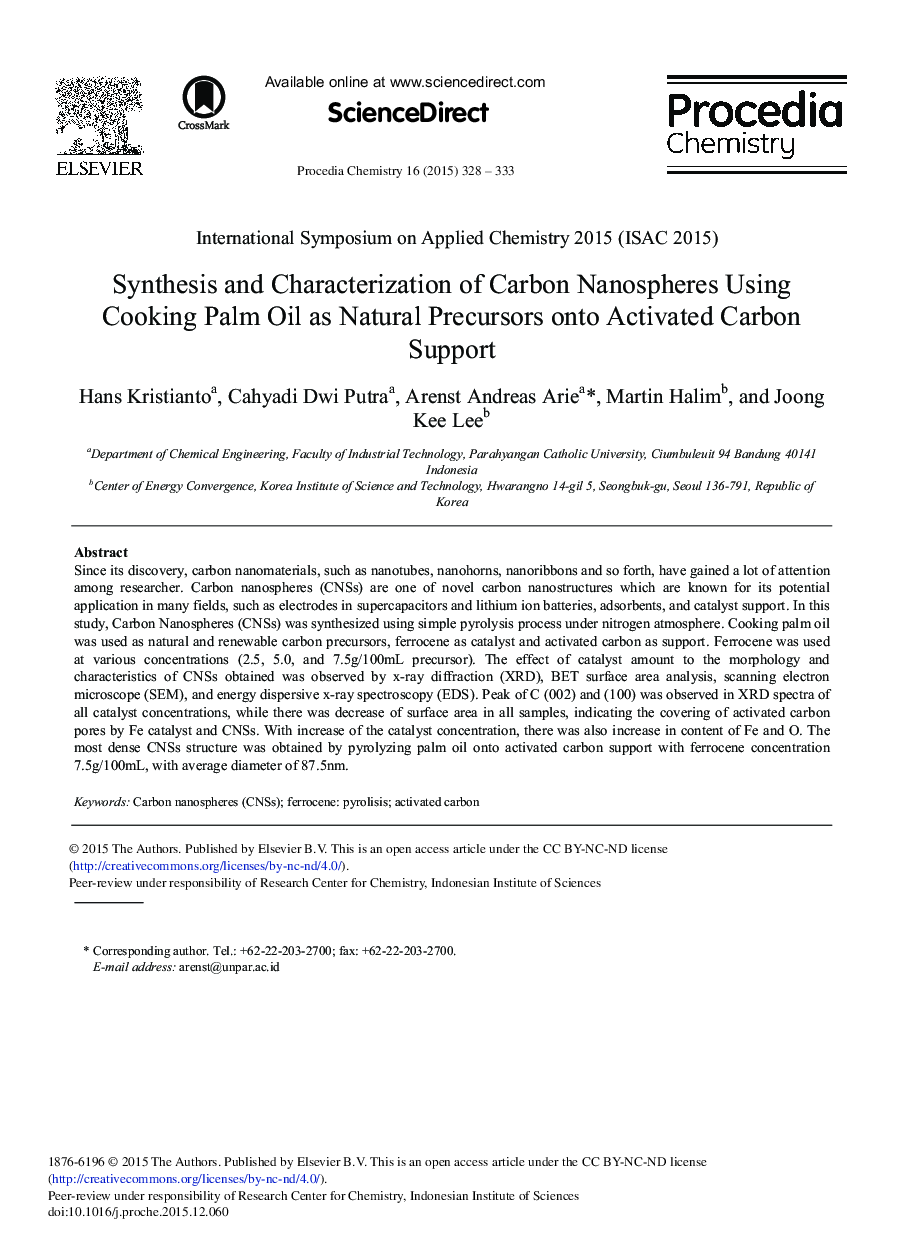| Article ID | Journal | Published Year | Pages | File Type |
|---|---|---|---|---|
| 240231 | Procedia Chemistry | 2015 | 6 Pages |
Since its discovery, carbon nanomaterials, such as nanotubes, nanohorns, nanoribbons and so forth, have gained a lot of attention among researcher. Carbon nanospheres (CNSs) are one of novel carbon nanostructures which are known for its potential application in many fields, such as electrodes in supercapacitors and lithium ion batteries, adsorbents, and catalyst support. In this study, Carbon Nanospheres (CNSs) was synthesized using simple pyrolysis process under nitrogen atmosphere. Cooking palm oil was used as natural and renewable carbon precursors, ferrocene as catalyst and activated carbon as support. Ferrocene was used at various concentrations (2.5, 5.0, and 7.5 g/100 mL precursor). The effect of catalyst amount to the morphology and characteristics of CNSs obtained was observed by x-ray diffraction (XRD), BET surface area analysis, scanning electron microscope (SEM), and energy dispersive x-ray spectroscopy (EDS). Peak of C (002) and (100) was observed in XRD spectra of all catalyst concentrations, while there was decrease of surface area in all samples, indicating the covering of activated carbon pores by Fe catalyst and CNSs. With increase of the catalyst concentration, there was also increase in content of Fe and O. The most dense CNSs structure was obtained by pyrolyzing palm oil onto activated carbon support with ferrocene concentration 7.5 g/100 mL, with average diameter of 87.5 nm.
